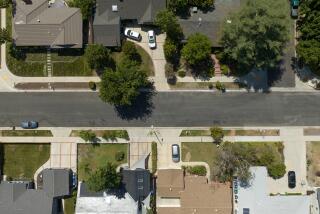
- Share via
Millions of Southern Californians will wake up to the region’s most severe water restrictions ever on June 1, with local water agencies under orders to slash the use of supplies from the State Water Project by 35%.
Many water experts say that the cuts are achievable and that reducing outdoor watering to one day a week can help yield immediate savings. At the same time, researchers and water policy experts say, the region needs to adapt to the severe drought because climate change, extreme heat and dwindling snowpack will only serve to exacerbate the issues in years to come.
“It’s time for belt-tightening,” said Jonathan Parfrey, executive director of the group Climate Resolve. “We must realize that our beautiful Mediterranean climate is changing, and we must change with it,” said the former Los Angeles Department of Water and Power commissioner.
Adaptation may be difficult, but there are other cities, states and nations that can offer guidance.
For example, the city of Healdsburg in Sonoma County cut water use by 56% last summer. The Las Vegas area has reduced per capita water use by almost half. And in Israel, long-term investments in wastewater recycling, desalination and other technologies have helped the water-scarce country secure ample supplies for cities and farms.
The stories of how each of these areas have worked to address their urgent water needs offer parallel examples that show how Southern California might respond to the water shortage.
Healdsburg
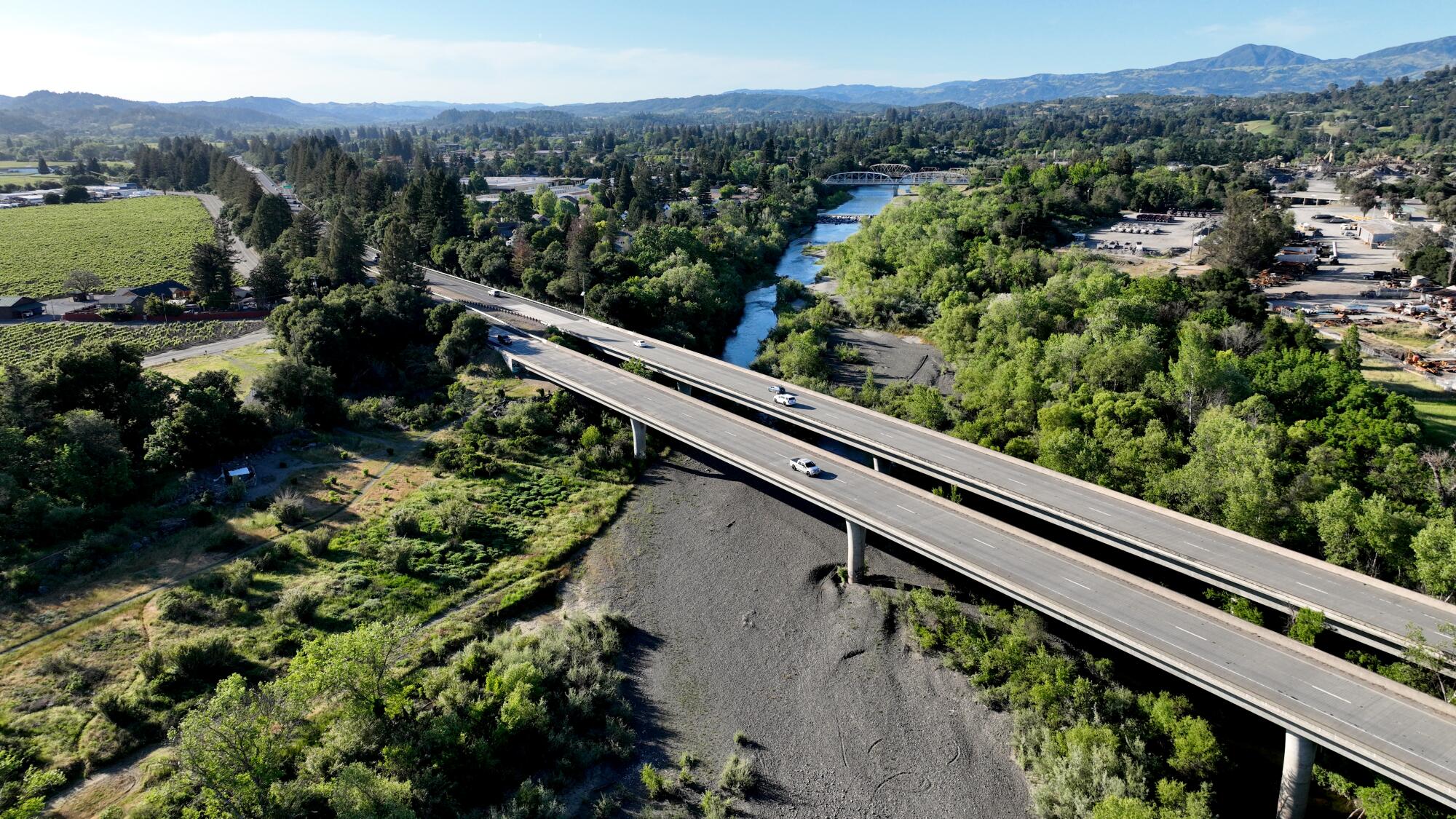
Healdsburg is about 400 miles north of Los Angeles and one year ahead of it — at least in terms of drought response. Amid dismal rainfall last year, the city faced historically low allocations from its primary water source, the upper Russian River watershed.
“Last summer by far exceeded any concerns that we had during the 2014-2015 drought,” Healdsburg Utilities Director Terry Crowley recalled. “Rainfall was lower than it’s been in 100 years. All of the water rights being curtailed in the watershed is pretty much unheard of.”
In response, city officials set out to reduce the area’s water consumption by at least 40%. To get there, they employed many of the same actions Los Angeles and other nearby areas are considering today, including capping household water use and issuing a near-total ban of outdoor irrigation. Healdsburg officials patrolled the area and issued warnings and eventually fines to residents who did not comply.
The system worked: Healdsburg saw a 56% reduction in water use last summer compared with the summer prior, Crowley said.
“It was pretty significant,” he said. “I think a lot of people don’t realize how much water they put on a landscape.”
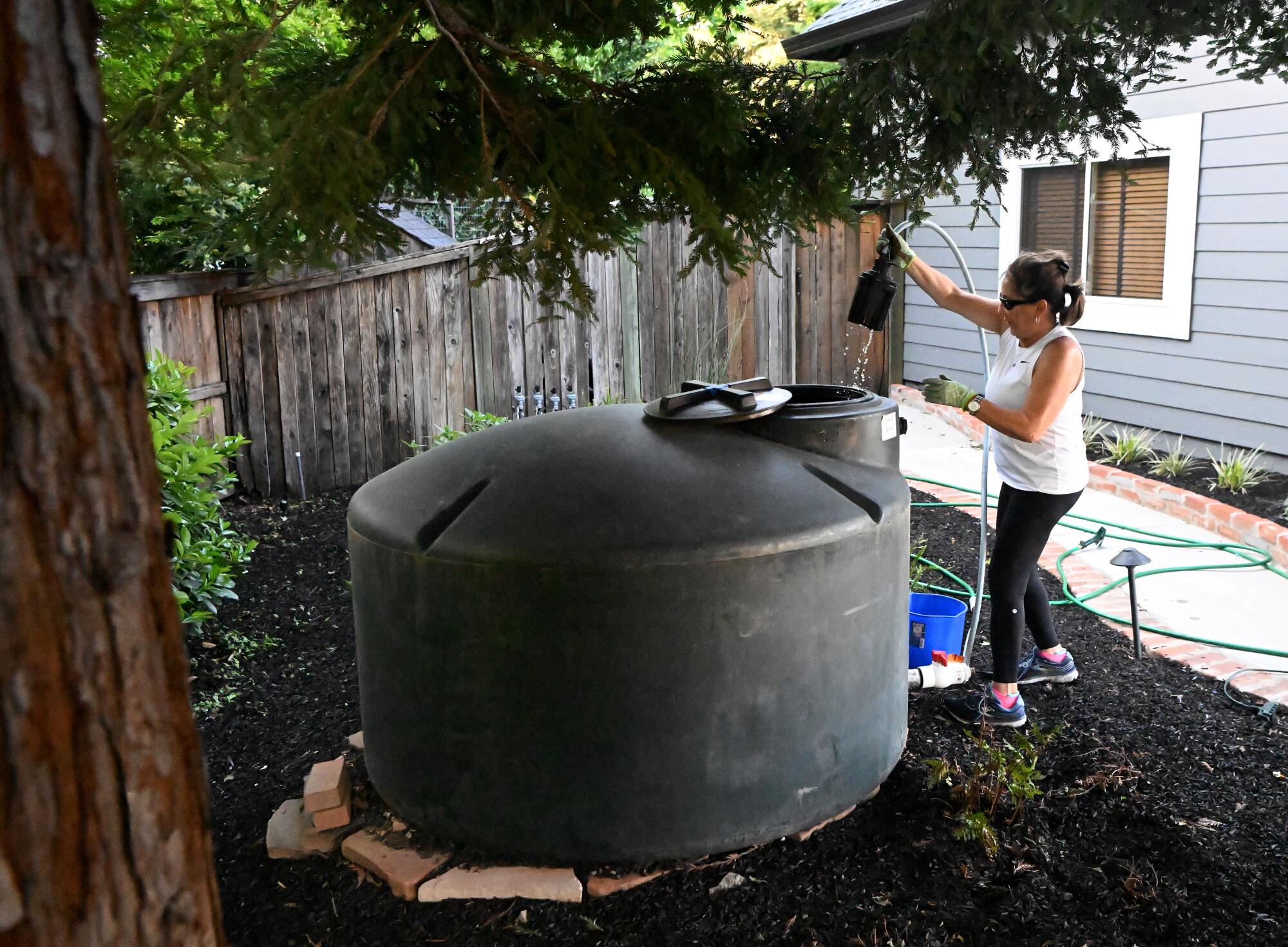
Anne Friedemann, a 30-year resident of the wine country community, said water conservation has now become a way of life. Last summer, she and her husband took advantage of city rebate programs to replace some of their grass with drought-tolerant landscaping and update their indoor appliances for better water efficiency. At the city’s suggestion, they also bought a home monitoring device called a Flume that helps track their use by the gallon.
“It’s a lot easier than you think,” Friedemann said of conservation. “It’s just learning how to change your behavior, and it works.”
The city last summer also created a recycled water hauling program in which treated wastewater was trucked into town, providing about 500 extra gallons to residents each week to help supplement some of their landscape needs. Friedmann bought two tanks and now has them filled biweekly.
“My husband and I are happy with purchasing the reclaimed water and using that to irrigate, rather than using water that people would otherwise drink or bathe with,” she said, “so we feel that sort of is our savings as well.”
Crowley said the city is continuing to look at projects that will “help stabilize our water supply,” including aquifer storage and recovery wells and a possible pipeline to help bring recycled water to town more efficiently.
As Southern California considers its own response, Crowley said it was helpful for officials to remember that “what works for one person doesn’t necessarily work for the next.” Some people appreciated a water budget that allowed them to manage their use over the month, while others preferred a list of restricted activities to help curb their consumption.
Las Vegas
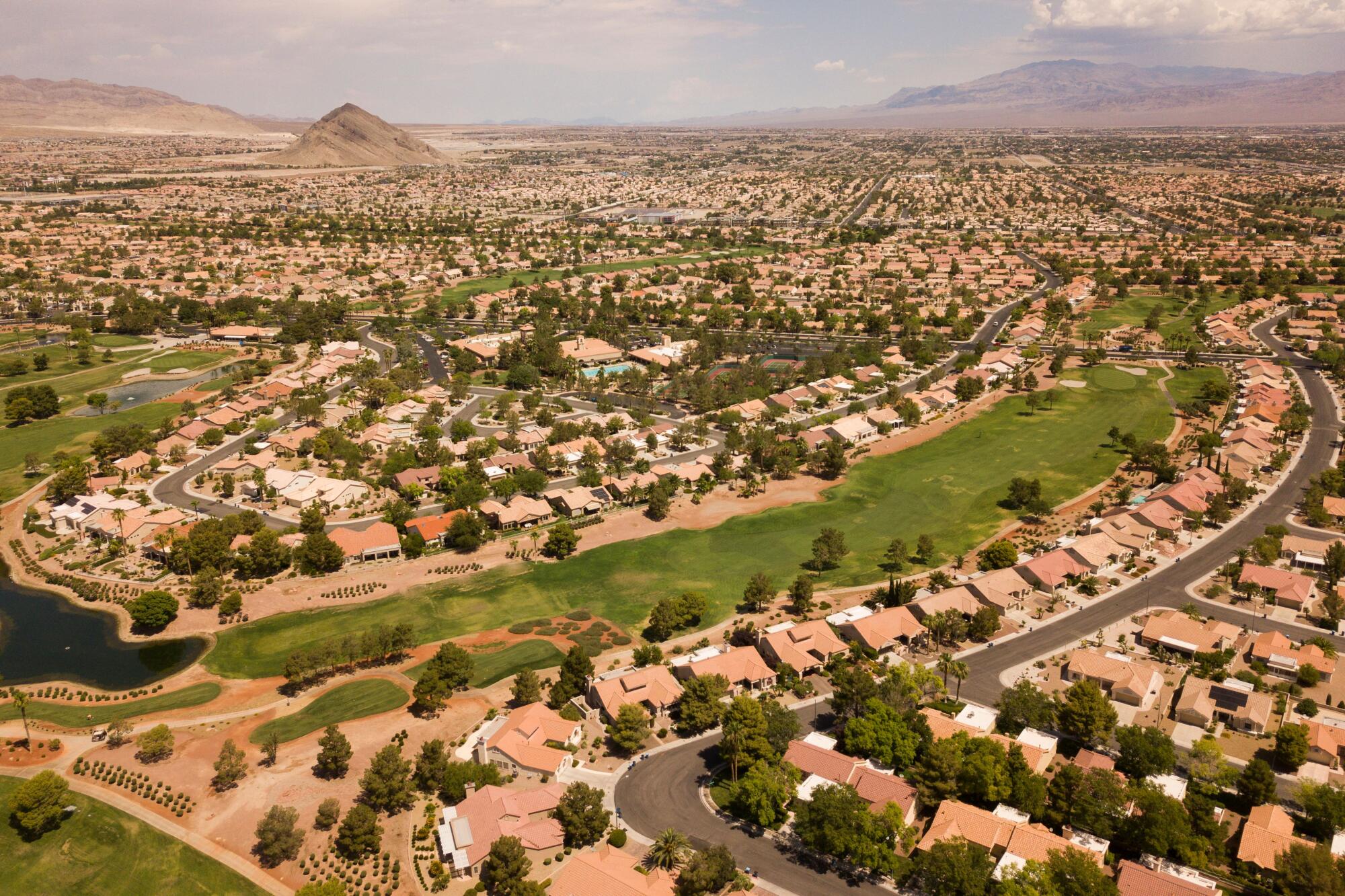
Las Vegas has dramatically shrunk its water footprint over the last two decades. The Southern Nevada Water Authority’s consumption of Colorado River water has declined about 26% since 2002. During those 20 years, while the customer base grew by more than 750,000 new residents, per capita water use dropped by an astonishing 48%.
The impetus came in 2002, when the Southern Nevada Water Authority used more than its allocation of Colorado River water.
“That’s when we really flipped the switch in a big way on conservation,” said Colby Pellegrino, the water authority’s deputy general manager of resources.
It began providing cash rebates to help homeowners cover the costs of taking out lawns and putting in drip-irrigated desert shrubs and trees. Similar rebates in Southern California have helped cut water use.
In 2003, the Las Vegas area’s consumption of Colorado River shrank more than 16%. Those conservation gains continued as the water authority strengthened its water-saving rules, mostly focusing on reducing the amount of water sprayed on grass.
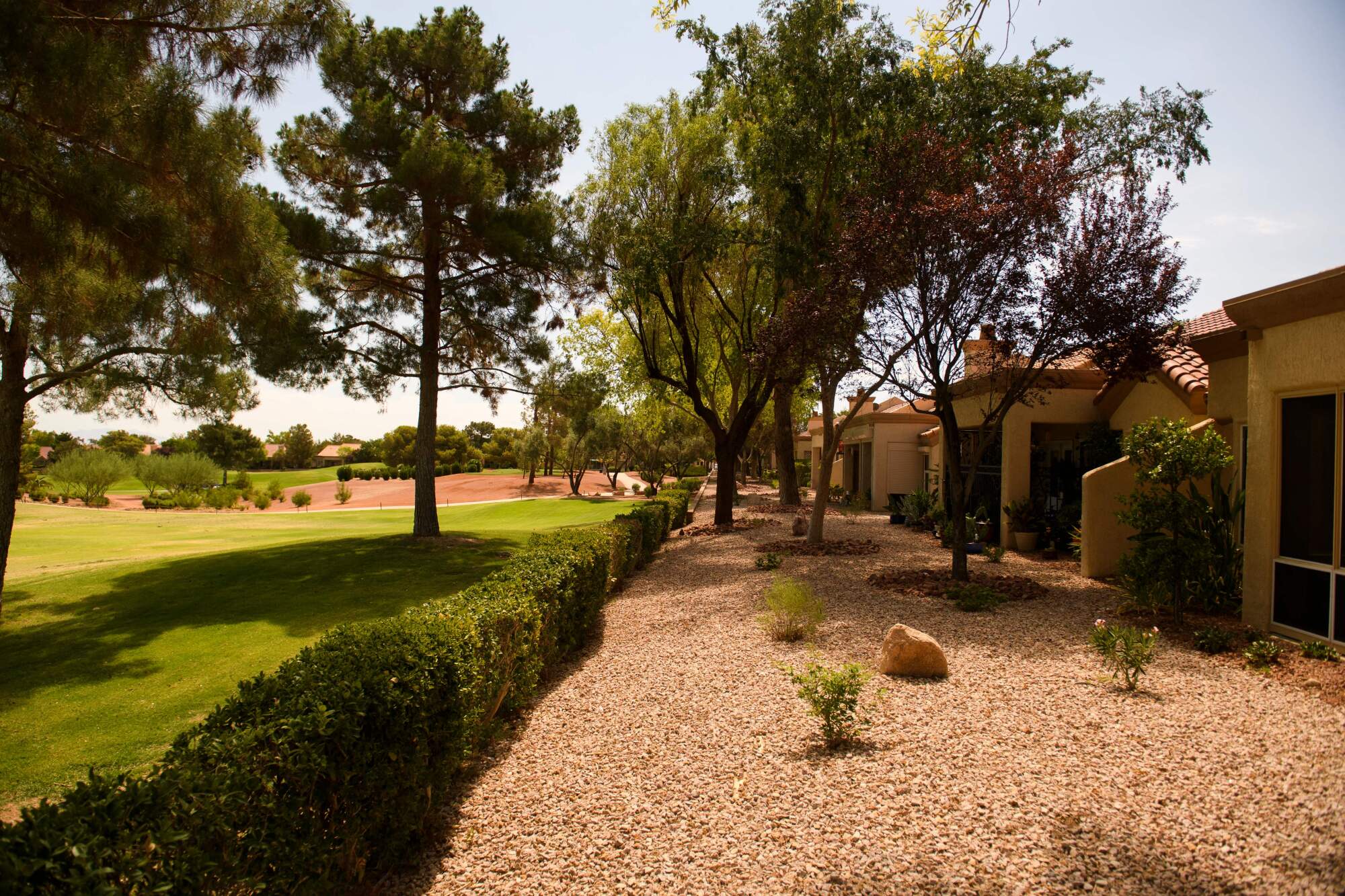
In 2004, frontyard lawns were prohibited for new residential developments. Grass was also prohibited in new commercial developments. Golf courses were given water budgets. The water authority adopted seasonal restrictions on outdoor watering and assigned staff to cite violators and patrol for cases of water waste.
About 40% of the area’s water is used indoors, and that wastewater is treated and released back into the nearby reservoir at Lake Mead to be reused. The conservation programs have focused mainly on shrinking the water that isn’t recycled — the 60% that’s used outdoors.
Last year, the Nevada Legislature passed a law that will prohibit the use of Colorado River water for “nonfunctional” or decorative grass along streets, at commercial properties such as business parks and shopping centers, and at homeowners associations and apartment complexes. The law takes effect in 2026.
“There’s a huge payoff in getting rid of turf, particularly turf that’s purely esthetic,” Pellegrino said. She pointed out that grass in the desert climate requires an average of 73 gallons per square foot annually, while desert landscaping requires about a fourth of that amount.
Even as Las Vegas has reduced water use, the shortage on the Colorado River continues to present major challenges. The toll of climate change in worsening droughts means the entire region needs to be prepared, Pellegrino said.
“Everything climate scientists are telling us is that the future is going to look more like this, if not worse,” Pellegrino said. “And I think this is really the time for us to roll up our sleeves and figure out how to do hard things.”
Israel

Like Southern California, Israel has a dry climate where scarce rainfall makes water precious. However, Israel faces even more limited water supplies and launched efforts to adapt and use water more efficiently decades ago.
Today, water recycling, desalination and drip irrigation, among other tools, have all helped turn the semidesert country into one with a water surplus.
“During the last three decades, Israel made a quantum leap in water reclamation,” Lior Gutman, a spokesman for Israel’s national water company, Mekorot, wrote in an email.
To achieve its gains, the country invested heavily in water recycling, Gutman said. Today, as much as 90% of the country’s wastewater is recycled and reused, much of it flowing to agriculture. For comparison, California now recycles about 23% of its municipal wastewater.
“Above all we consider wastewater as a resource, just like natural gas or sunlight,” he said.
And though Israel once relied heavily on fresh water from the Sea of Galilee, it now gets more than 80% of its household drinking water through six major desalination plants near the Mediterranean and Red seas. Gutman said seawater pumped to the plants is ready to be used for drinking, showers and cooking after only four hours, and “after the water goes down the drain it takes no more than 72 hours until [it] is being used to grow cherry tomatoes at the far desert.”
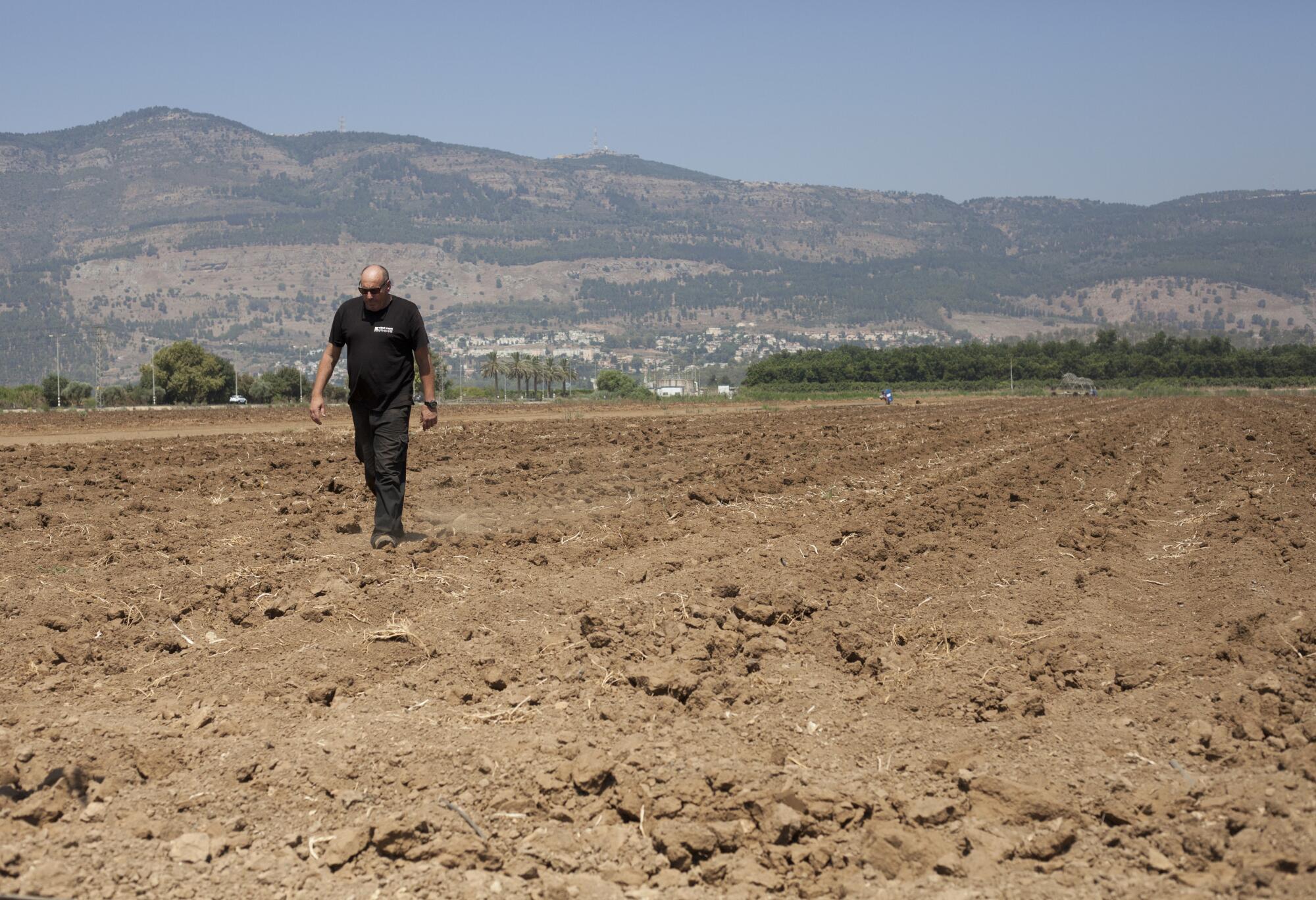
Seth Siegel, a water policy expert and author of the bestseller “Let There Be Water: Israel’s Solution for a Water-Starved World,” said one component of Israel’s success is that the country “did not decide on a ‘silver bullet’ approach with one magical solution, but rather decided on an ‘all-of-the-above’ solution.”
“They rely on many, many different things — including culture, including market forces, including rethinking agriculture, including thinking about how to use water for recreation,” he said.
California is already pulling some tools from the country’s toolbox, he said. The Metropolitan Water District of Southern California is helping fund test trials of N-Drip, an Israeli gravity-powered drip irrigation technology for which Siegel serves as chief sustainability officer, in alfalfa and cotton fields in Arizona. Early results from the tests indicate as much as 60% water savings, according to the MWD.
And though desalination can be costly and energy-intensive and has impacts on sea life, Siegel said, Israel has made their plants work well using advanced filtration and intake systems, off-peak electricity use, high-efficiency pumps and other technologies.
Israel also has some of the lowest “leak levels” in the world, Siegel said. While many U.S. utilities assume a water loss rate as high as 30%, the number is less than 8% in Israel, something he attributed to early detection systems including algorithmic predictors and sonar technologies that scan for problems. Water main breaks are nearly unheard of.
In his book, Siegel described Israel as a “water superpower,” but he also noted that the situation is very different for the Palestinians in the neighboring Gaza Strip, who struggle with severely limited and polluted supplies from a shallow aquifer, underscoring the “reality that there is no logical solution to Gaza’s water crisis without Israel playing a leading role.”
Peter Gleick, an expert who has worked on water issues in Israel, Gaza and the West Bank, said these disparities show how water has long been a source of tension and conflict in the region.
“The terrible humanitarian situation in Gaza is, in part, a water crisis, and Israel has long hindered efforts to bring safe water and sanitation infrastructure to Gazans,” he said.
At the same time, Gleick said, Israel’s water achievements offer lessons.
“Israel deserves credit for modernizing and improving their water system, including great efforts to shift away from water-intensive agriculture, improving irrigation efficiency and especially using more and more of their wastewater,” said Gleick, who is president emeritus of the Pacific Institute. “Their urban water use is much more efficient than California’s, even with the progress we’ve made here.… We could learn lessons from them in these areas.”
Photographer Josh Edelson contributed this report.


